<p>The explosive growth of aquaculture and the growing marine interest as nations develop their blue economy are making automated monitoring and digitalisation becoming increasingly essential in the marine sector. This has triggered an array of research and development into new and cost-effective analytical monitoring systems which could push the potential of automatization in the marine sector even further. Open-source hardware, in combination with proven monitoring techniques have opened the possibility to fill this potential market. In this thesis a cheap pool monitoring system was used to demonstrate the open-source abilities to autonomously monitor, digitalise and visualise data, from a recirculating macro-algae culture system to an online visualisation platform called Thingspeak. Secondly, nutrient sensors are high in demand but incredibly expensive and therefore open-source hardware was used to drive a multi-pumping flow system in combination with a cheap LED and light sensor to construct a standalone in-situ phosphate nutrient detector. The working principle revolves around the photometric detection of the coloured molybdovanadophosphoric acid formed after the binding of phosphate with the vanadate-molybdate reagent. The working design along with the results are presented and show a nearly perfect linear regression fit between 0.02 to 10.00 ppm of phosphate (R2 = 0.9998).</p>
promotor/supervisor feedback
nothing yet




